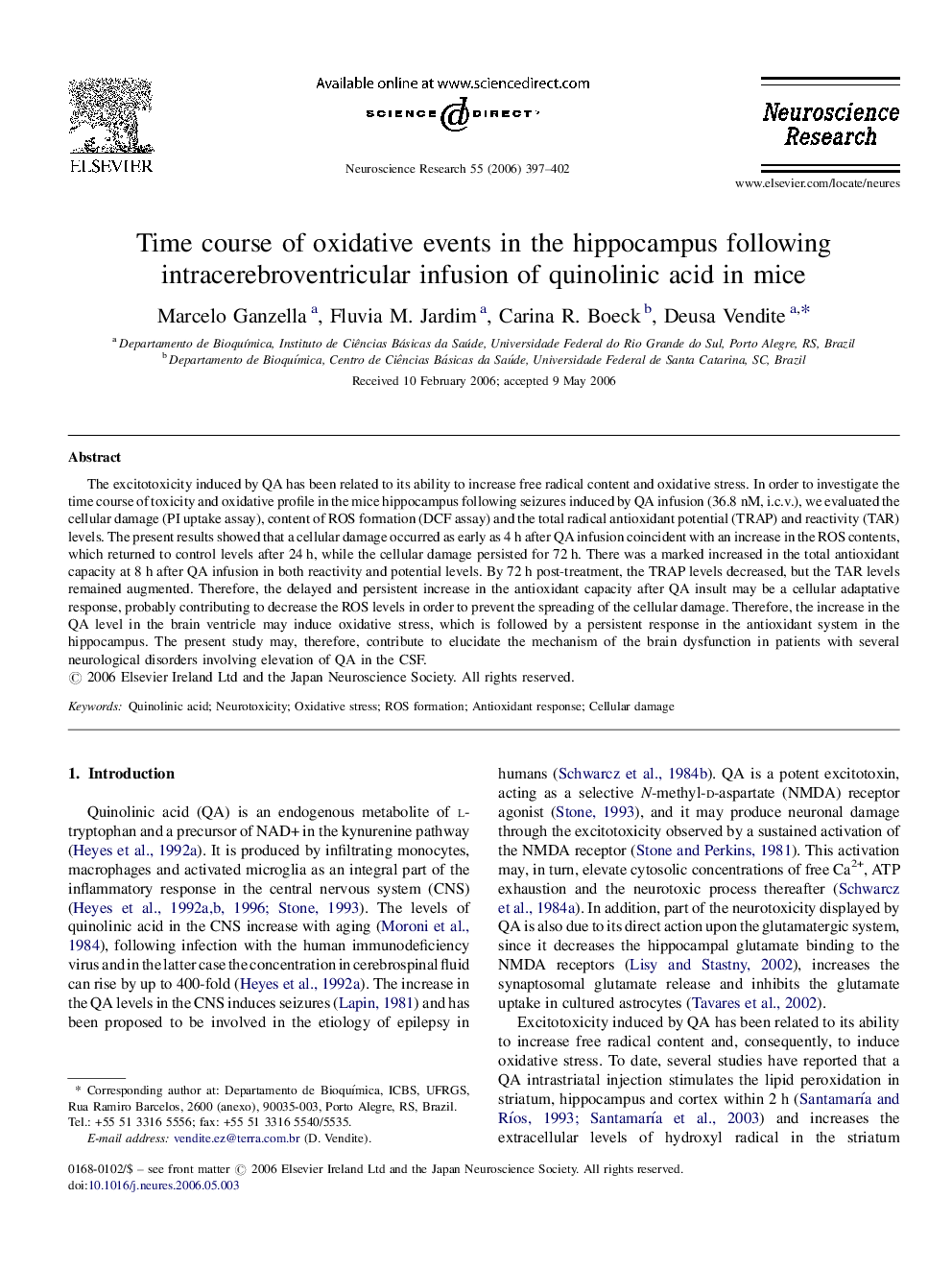| Article ID | Journal | Published Year | Pages | File Type |
|---|---|---|---|---|
| 4352553 | Neuroscience Research | 2006 | 6 Pages |
Abstract
The excitotoxicity induced by QA has been related to its ability to increase free radical content and oxidative stress. In order to investigate the time course of toxicity and oxidative profile in the mice hippocampus following seizures induced by QA infusion (36.8Â nM, i.c.v.), we evaluated the cellular damage (PI uptake assay), content of ROS formation (DCF assay) and the total radical antioxidant potential (TRAP) and reactivity (TAR) levels. The present results showed that a cellular damage occurred as early as 4Â h after QA infusion coincident with an increase in the ROS contents, which returned to control levels after 24Â h, while the cellular damage persisted for 72Â h. There was a marked increased in the total antioxidant capacity at 8Â h after QA infusion in both reactivity and potential levels. By 72Â h post-treatment, the TRAP levels decreased, but the TAR levels remained augmented. Therefore, the delayed and persistent increase in the antioxidant capacity after QA insult may be a cellular adaptative response, probably contributing to decrease the ROS levels in order to prevent the spreading of the cellular damage. Therefore, the increase in the QA level in the brain ventricle may induce oxidative stress, which is followed by a persistent response in the antioxidant system in the hippocampus. The present study may, therefore, contribute to elucidate the mechanism of the brain dysfunction in patients with several neurological disorders involving elevation of QA in the CSF.
Keywords
Related Topics
Life Sciences
Neuroscience
Neuroscience (General)
Authors
Marcelo Ganzella, Fluvia M. Jardim, Carina R. Boeck, Deusa Vendite,
